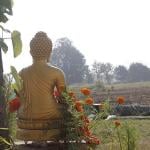We all hear of the great Tibetan masters who, locked in Chinese prisons, tortured, in forced labor, find compassion and depth of practice. These rare and exceptional beings may serve as lights in the darkest of our spiritual nights. Yet for most of us, a prison or other state of heightened, extended stress will only bring out the worst in us (See the Stanford Prison Experiment). Part of spiritual practice is knowing our limits and being honest with ourselves and others about them.
Many people turn to meditation in times of great turmoil, only to find that they are hindered in some way. The Buddha knew that this would happen and taught methods for overcoming what he called the five hindrances:
- Sensual desire (kamacchanda): Craving for pleasure to the senses.
- Anger or ill-will (byapada, vyapada): Feelings of malice directed toward others.
- Sloth, torpor and boredom (thina-middha): Half-hearted action with little or no concentration.
- Restlessness and worry (uddhacca-kukkacca): The inability to calm the mind.
- Doubt (vicikiccha): Lack of conviction or trust.
Chief among these practices for overcoming the hindrances are the cultivations of the Seven Factors of Enlightenment:
- Mindfulness (sati) i.e. to be aware and mindful in all activities and movements both physical and mental
- Investigation (dhamma vicaya) into the nature of dhamma
- Energy (viriya)
- Joy or rapture (piti)
- Relaxation or tranquility (passaddhi) of both body and mind
- Concentration (samadhi)
- Equanimity (upekkha), to be able to face life in all its vicissitudes with calm of mind and tranquillity, without disturbance.
and:











